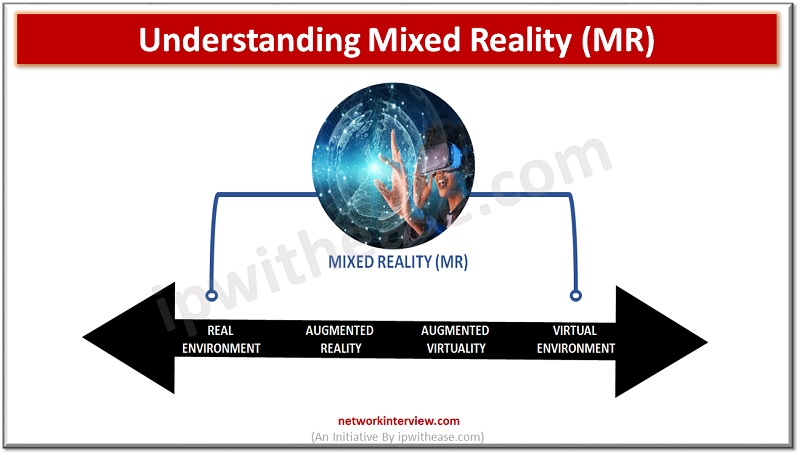
Mixed Reality: What It Is and How It Can Enhance Your Life
Mixed reality (MR) is a technology that has been gaining traction in recent years and is quickly becoming a powerful tool in various industries. In this blog article, we’ll take an in-depth look at what MR is, the different types of MR, the various applications of MR, the different MR devices, the future of MR, and how it compares to virtual reality.
What is Mixed Reality?
Mixed reality (MR) is a combination of virtual reality (VR) and augmented reality (AR). It is an immersive technology that combines the real world with virtual elements. It is a way of interacting with and manipulating digital objects in an environment that is realistic and interactive. MR is the next evolution of AR and VR and is often referred to as the “ultimate” reality.
MR is a technology that allows you to interact with digital objects in a way that is realistic and immersive. It combines elements of the real world with virtual elements, creating a hybrid environment. It is also a way of merging the physical and digital worlds. For example, you could use MR to create a virtual version of a real-world object and manipulate it in a way that is not possible with just physical objects.
MR is also a way of enhancing everyday experiences. For instance, you could use MR to create a virtual version of an event or a place and interact with it in an immersive way. This could be used to create an interactive educational experience or to explore and experience a new place virtually.
Types of MR Technologies
There are several types of MR technologies. The most commonly used types are:
- Augmented Reality (AR): AR overlays digital objects and information onto the real world. It is used to enhance the real world with digital elements.
- Virtual Reality (VR): VR is an immersive technology that creates a fully-fledged virtual environment. It is used to replicate real-world environments and experiences.
- Mixed Reality (MR): MR is a combination of AR and VR. It is used to create an interactive environment that combines the physical and digital worlds.
- Simulated Reality (SR): SR is an immersive technology that creates a virtual environment that is indistinguishable from the real world. It is used to create an experience that is as close to reality as possible.
Applications of Mixed Reality
- MR has a wide range of applications in different industries. It can be used to create an immersive experience, such as interactive educational experiences or virtual tours. It can also be used to create simulations, such as for training in hazardous environments or product testing.
- MR is also used for entertainment, such as gaming, virtual reality movies, and virtual reality concerts. MR is also used for marketing and advertising, as it allows companies to create engaging and immersive experiences for potential customers.
- MR is also used for data visualization, such as for viewing complex data sets or for creating interactive 3D models. It is also used for medical applications, such as for medical training and surgery simulations.
Mixed Reality Devices
There are several types of MR devices available. These include:
- Head-mounted displays (HMD): HMDs are devices that are worn on the head and display digital content. They are used to create an immersive experience.
- Smartphones and tablets: Smartphones and tablets are portable devices that are used to display digital content. They are used to create an interactive and immersive experience.
- Wearable devices: Wearable devices are devices that are worn on the body and are used to display digital content. They are used to create an interactive and immersive experience.
- Gesture-based devices: Gesture-based devices are devices that use hand or body gestures to interact with digital content. They are used to create an interactive experience.
- Haptic feedback devices: Haptic feedback devices are devices that use vibrations or other sensations to create an immersive experience. They are used to create an immersive experience.
The Future of Mixed Reality
MR has the potential to revolutionize the way we interact with technology. As MR technology advances, it will become more widely used in different industries, such as entertainment, education, marketing, and healthcare.
MR has the potential to create a more immersive and interactive experience. It could be used to create virtual tours of places, interactive virtual classrooms, and simulations for product testing or medical training.
MR also has the potential to create entirely new experiences. For example, it could be used to create virtual theme parks, virtual events, and digital versions of real-world objects.
Mixed Reality vs Virtual Reality
MR is often compared to VR, as they are both immersive technologies. However, there are several key differences between the two.
- VR is an immersive technology that creates a fully-fledged virtual environment. It is used to replicate real-world environments and experiences. MR, on the other hand, is a combination of AR and VR. It is used to create an interactive environment that combines the physical and digital worlds.
- VR is used to create an immersive and interactive experience, while MR is used to create a hybrid environment that combines the real world with virtual elements. MR is more versatile than VR, as it can be used to create more realistic experiences and simulations.
Conclusion
If you’re looking for a way to enhance your life and experience the world in a new way, then mixed reality is definitely worth exploring. With its versatile applications, MR can help you create immersive experiences and explore new possibilities.
Continue Reading:
Top 10 Networking technology trends
Tag:New technology



